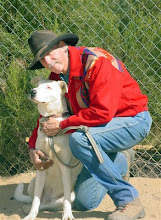Douglas Levey, a Zoology professor and evolutionary ecologist from the University of Florida, recently led a team of scientists to the rural areas of Bolivia to study chili pepper plants and chili peppers that grow in the wild there. They were especially interested in studying native populations of plants in their natural habitat to determine why some chili peppers are "hot" and some are not.
Their work is finished for now, and they just reported to the scientific community. The project was funded by the National Science Foundation and the National Geographic Society, and we believe it was money and time well spent. They learned a lot of very interesting things about chili peppers - many of them with probable commercial applications in the chili pepper industry.
Read all about their work and results in the newsletter that we just posted on our support website. Follow the link below to the main newsletter page, and then click on the newsletter title, "New Research Results: Why Some Chili Peppers Are Hot and Some Are Not." The newsletter will appear for you to read. If you are a true chili lover, you will want to add this new knowledge to your personal database of all things chili. Who knows, maybe you will also want to go to Bolivia to see for yourself. It would be a fun trip, I'm sure.
Website no longer available.
Saturday, September 6, 2008
Subscribe to:
Post Comments (Atom)

No comments:
Post a Comment